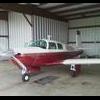flying with fuel in only one tank
-
Members Online
- IvanP
- NickG
- Scooter
- redbaron1982
- MikeOH
- Matthew P
- MarkD34M
- jetdriven
- Schllc
- Vance Harral
- Mike T
- 1980Mooney
- AndreiC
- Bartman
- Sabremech
- hammdo
- varlajo
- M20F
- CaliDreaminMr
- Jeff Uphoff
- Medicpilot
- Justin Schmidt
- Jake@BevanAviation
- Gary0747
- gabez
- 201er
- Skyland
- mluvara
- Aerodon
- Kirch56H
- DonMuncy
- Mooney in Oz
- Alan Maurer
- kaba


Recommended Posts
Join the conversation
You can post now and register later. If you have an account, sign in now to post with your account.